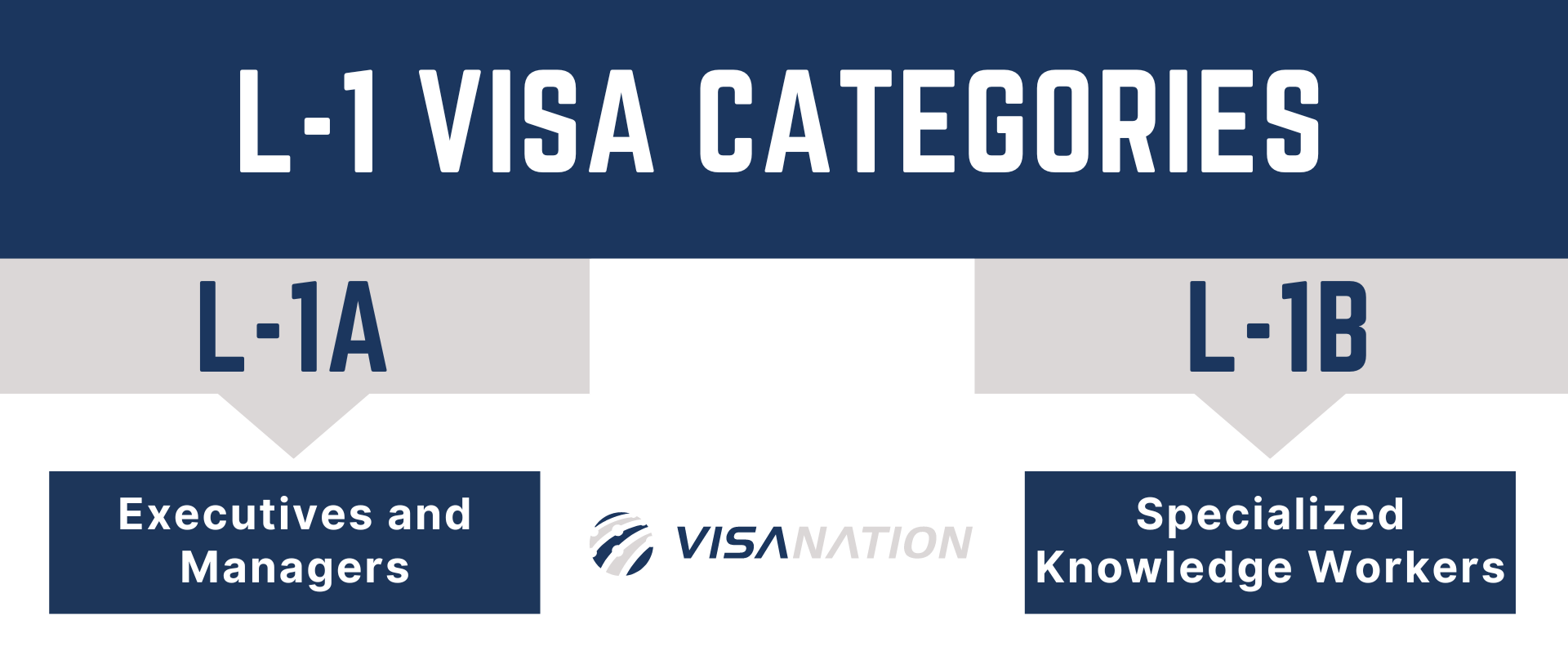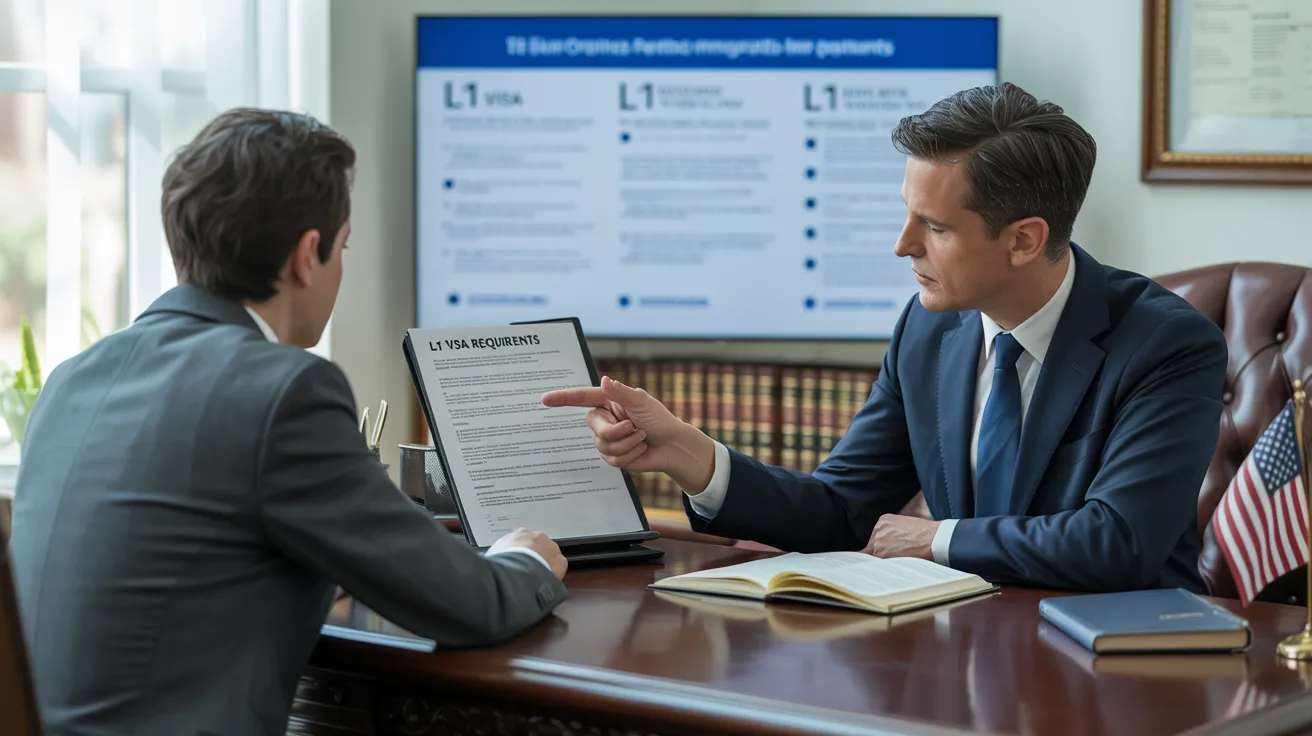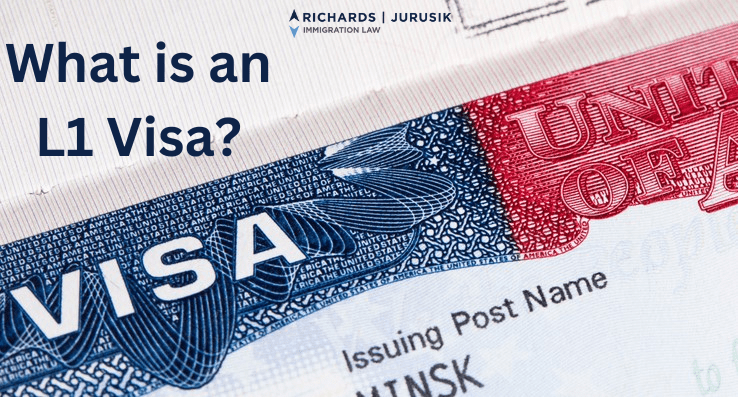Unlocking Opportunities: A Comprehensive Overview to the L1 Visa Process
The L1 visa procedure presents an essential path for international companies seeking to move vital workers throughout borders. Comprehending the nuances of qualification criteria, the distinctions in between L-1A and L-1B visas, and the intricacies of the application procedure can greatly affect an applicant's success. Steering this complicated landscape is not without its challenges, and careful attention to documents and employer sponsorship is vital. As we check out the key components of this procedure, the methods for overcoming possible barriers will become evident, exposing exactly how notified prep work can open a world of chances.
Understanding the L1 Visa
Understanding the L1 visa requires acknowledging its value as a crucial tool for international business looking for to move proficient employees in between worldwide workplaces. This non-immigrant visa classification facilitates the activity of executives, supervisors, and specialized knowledge workers to the United States, thus making it possible for organizations to preserve functional connection and harness international ability efficiently. The L1 visa is split right into two key categories: L-1A for managers and executives, and L-1B for staff members having specialized knowledge.The L1 visa offers a vital role in boosting a firm's affordable edge in the international marketplace - L1 Visa. By allowing companies to move their vital personnel, companies can ensure that crucial jobs are managed by qualified individuals who are already aware of the business's society and operational processes. This internal transfer system not just fosters understanding sharing however likewise advertises innovation and collaboration across borders.Moreover, the L1 visa is typically preferred for its relatively simple application procedure contrasted to other visa groups, as it permits double intent, allowing holders to go after long-term residency while on a momentary job visa. This feature makes the L1 visa particularly appealing for both employers and workers, as it streamlines the pathway for skilled professionals to establish long-lasting residency in the United States
Eligibility Criteria
Qualification for the L1 visa pivots on several crucial criteria that ensure both the staff member and the employer satisfy specific credentials. This non-immigrant visa is developed for international firms to transfer workers from foreign workplaces to U.S. counterparts.Firstly, the company has to be a qualifying company, which includes a parent business, branch, affiliate, or subsidiary of a united state company. The business has to have been doing business for a minimum of one year both in the united state and abroad. This assures that the firm has sufficient functional security and a reputable presence.Secondly, the staff member has to hold a supervisory, exec, or specialized knowledge setting. For L1A visas, the candidate must show managerial or executive certifications, while L1B visas concentrate on specialized knowledge pertaining to the organization's products, services, or processes. Furthermore, the worker should have benefited the international entity for at least one constant year within the last three years before their application.Lastly, the staff member's duty in the united state have to align with their previous position, making sure that their skills and competence are leveraged for the firm's advantage.
Types of L1 Visas
The L1 visa group makes up two primary kinds created to facilitate the transfer of employees within international firms: the L1A visa for managers and execs, and the L1B visa for workers with specialized expertise. Each kind serves unique purposes and has details eligibility criteria.The L1A visa is tailored for individuals who hold supervisory or executive placements within a business. This visa enables top-level workers to transfer to an U.S. branch, subsidiary, or associate of the same company. Applicants for the L1A visa must demonstrate that they have actually been utilized in a supervisory or executive capacity for at least one continual year within the past 3 years prior to their application. Furthermore, this visa provides a much longer duration of remain, initially granted for 3 years, with the opportunity of extensions for as much as seven years.In contrast, the L1B visa is planned for experts with specialized knowledge related to the company's products, services, or procedures. To qualify, applicants need to verify that their proficiency is critical to the company and that they have actually functioned for at the very least one continual year within the last three years in a role that required this specialized expertise. The L1B visa is originally given for three years, with extensions available for approximately five years.Both visa kinds are essential for firms seeking to boost their international operations by leveraging knowledgeable personnel, therefore promoting development and effectiveness within the united state market.
Application Process
Steering via the L1 visa process includes a number of crucial steps that must be carefully complied with to assure a successful outcome. The procedure begins with the U.S. company, that should initially establish qualification by showing a qualifying connection with the international entity and verifying that the worker satisfies the particular demands for the L1 visa classification being sought.Once eligibility is verified, the employer initiates the procedure by submitting Kind I-129, the Request for a Nonimmigrant Worker, with the U.S. Citizenship and Immigration Solutions (USCIS) This form has to be come with by a detailed summary of the job obligations to be done, the organizational framework of both the united state and international entities, and the employee's qualifications. It's essential to validate that all details is precise and total, as omissions or errors can bring about delays or denials.Upon approval of the I-129 application, the following step involves the worker obtaining the L1 visa at an U.S. embassy or consulate in their home country. This stage calls for the conclusion of Kind DS-160, the Online Nonimmigrant Visa, and setting up an interview. Throughout the interview, the applicant should present evidence sustaining their certifications and the company's petition.After the visa is given, the staff member can get in the USA to work in the marked role. Overall, cautious prep work and adherence to each action of the application process are crucial for a successful L1 visa outcome.
Required Documentation

Essential Types Needed
Steering the L1 Visa process requires mindful focus to the important types and paperwork necessary for an effective application. The primary kind needed is the Form I-129, Application for a Nonimmigrant Employee, which have to be finished and sent by the united state company. This form details the information of the employment offer and the credentials of the worker seeking the L1 Visa.Alongside Form I-129, the candidate will need to total Type I-539 if accompanying member of the family are also getting visas. Furthermore, the employer needs to offer evidence of the certifying relationship between the U.S. entity and the international entity, usually demanding the submission of business papers such as write-ups of unification or economic statements.Moreover, it is vital to include the L Category Supplement to Form I-129, which defines the sort of L Visa being requested-- either L-1A for supervisors and executives or L-1B for workers with specialized understanding. Ultimately, applicants must guarantee that all kinds are authorized and dated appropriately, as incomplete submissions can result in delays or rejections. Effectively setting up these essential kinds lays the foundation for a smoother L1 Visa procedure.

Sustaining Proof Requirements
Sustaining documentation is necessary for an effective L1 Visa, as it confirms the cases made in the application. Candidates need to offer a variety of documents to demonstrate qualification for the visa, which is categorized right into two main types: proof of the qualifying partnership in between the U.S. and foreign entities and evidence of the candidate's qualifications.To develop the relationship, candidates must submit paperwork such as company business charts, monetary statements, and evidence of possession. These records validate that the foreign firm has a certifying connection with the U.S. company, whether as a moms and dad company, subsidiary, branch, or affiliate.For the applicant's qualifications, necessary papers consist of an in-depth work letter from the international company, describing the applicant's task title, tasks, and duration of employment. Furthermore, academic credentials, such as levels and diplomas, ought to be given to confirm the applicant's competence in the pertinent field.
Employer Sponsorship Papers

Typical Difficulties
Navigating the L1 visa process presents a number of common challenges that applicants ought to understand. Trick problems usually include strict documentation needs, potential hold-ups in processing times, and the requirement for strict legal conformity. Comprehending these challenges can assist candidates better prepare and minimize dangers during their visa journey.
Paperwork Requirements
The L1 visa procedure usually presents significant obstacles connected to documentation requirements. Applicants need to offer considerable paperwork to establish eligibility, which can lead to confusion and prospective hold-ups. Key papers include evidence of a qualifying relationship between the U.S. and foreign employer, evidence of the candidate's employment history, and in-depth info about the task function in the U.S.One common difficulty is collecting sufficient evidence to demonstrate the nature of the certifying connection. Business usually have a hard time to existing clear business graphes or financial declarations that highlight the connection between the entities. In addition, making certain that letters of support from companies accurately show the candidate's task duties and qualifications is necessary, as obscure summaries can result in denials.Another issue arises from the requirement for comprehensive task summaries that straighten with the L1 visa classifications. Applicants have to verbalize not only their existing function yet also their supervisory or specific understanding responsibilities clearly. This demands a complete understanding of both the applicant's position and the regulatory language made use of in L1 visa.
Processing Dead Time
Experiencing delays in processing times is a typical obstacle dealt with by L1 visa candidates, typically leading to irritation and uncertainty. Several factors add to these delays, consisting of high application volumes, raised examination of applications, and management backlogs within the U.S. Citizenship and Immigration Solutions (USCIS) Candidates might find that handling times can differ considerably depending upon the solution center handling their application, as each facility has its own work and performance degrees. Additionally, the intricacy of the candidate's situation, such as the demand for extensive documentation or clarification, can even more extend wait times.In some circumstances, problems associated with the candidate's current immigration condition or previous visa background may also result in additional hold-ups, as USCIS may call for additional review or details. It is important for prospects to stay aggressive throughout this period, keeping open communication with their companies and legal agents to address any kind of potential concerns promptly.Understanding these handling time challenges can help L1 visa candidates get ready for possible delays and mitigate the impact on their shift and profession strategies. Persistence and persistance are vital merits in navigating this elaborate procedure.
Legal Compliance Issues
Several L1 visa applicants come across legal conformity concerns that can complicate their trip toward acquiring the visa. Recognizing and sticking to the specific policies set by the united state Citizenship and Migration Solutions (USCIS) is essential. Usual challenges consist of demonstrating the qualifying partnership in between the foreign and united state companies, in addition to confirming that the applicant possesses the requisite specific understanding or managerial capacity.Additionally, candidates need to give comprehensive paperwork detailing their work duties, company framework, and monetary viability of the U.S. entity. Inadequate or unreliable documents can result in delays and even denials. Employers must also assure that they abide by labor regulations, consisting of wage and working problem requirements, which can impact visa eligibility.Another usual problem involves maintaining conformity with the regards to the visa when given. Changes in work standing, job responsibilities, or company framework can necessitate changes to the visa, which if not addressed immediately can bring about lawful complications. Therefore, remaining notified concerning conformity needs and looking for lawful counsel when needed is important to browse the complexities of the L1 visa procedure efficiently.
Tips for Success
Success in the L1 visa procedure commonly rests on careful preparation and attention to information. To boost your opportunities of authorization, start by completely understanding the qualification needs for both the L1A and L1B visa categories. Examine whether your setting at the business certifies as managerial, executive, or specialized expertise, as this classification especially influences your application.Next, collect considerable documentation that confirms your claims. This consists of business charts, comprehensive job descriptions, and proof of the firm's functional structure. Clear and succinct evidence of the certifying partnership between the united state entity and the international entity is important. Validate that all records are arranged rationally and provided in an expert manner, as this shows your dedication and seriousness concerning the application.Engage the solutions of a knowledgeable migration lawyer who concentrates on L1 visas. Their knowledge can verify vital, assisting you with complex guidelines and guaranteeing that all documentation abides by present laws. Furthermore, prepare for the interview by practicing response to usual concerns and being ready to review your role and contributions to the firm comprehensive.
Regularly Asked Questions
Can Household Members Come With the L1 Visa Holder?
Yes, relative of L1 visa holders, including partners and single youngsters under 21, can come with the primary visa owner. They might also get L2 visas, which permit them to stay in the United States.
For How Long Can I Remain On an L1 Visa?
The L1 visa enables preliminary keeps of approximately 3 years, with the possibility of extension. L1A visa holders might remain for a maximum of seven years, while L1B visa owners can remain for five years.
Can L1 Visa Owners Obtain a Permit?
Yes, L1 visa owners can get an environment-friendly card. L1 Visa. They might go after long-term residency via employment-based groups, generally requiring sponsorship from L1 Visa their employer, given they satisfy the essential certifications and documents needs
What Takes place if My L1 Visa Is Rejected?
If your L1 visa is denied, you might receive a notice detailing the reasons for denial. You can look for to appeal the choice, reapply, or explore alternative visa options based on your circumstances.
Are There Any Type Of Travel Restrictions With an L1 Visa?
An L1 visa usually enables global travel; nonetheless, re-entry to the united state is contingent upon maintaining valid status. Travelers should assure compliance with visa problems to avoid difficulties upon return
Conclusion
